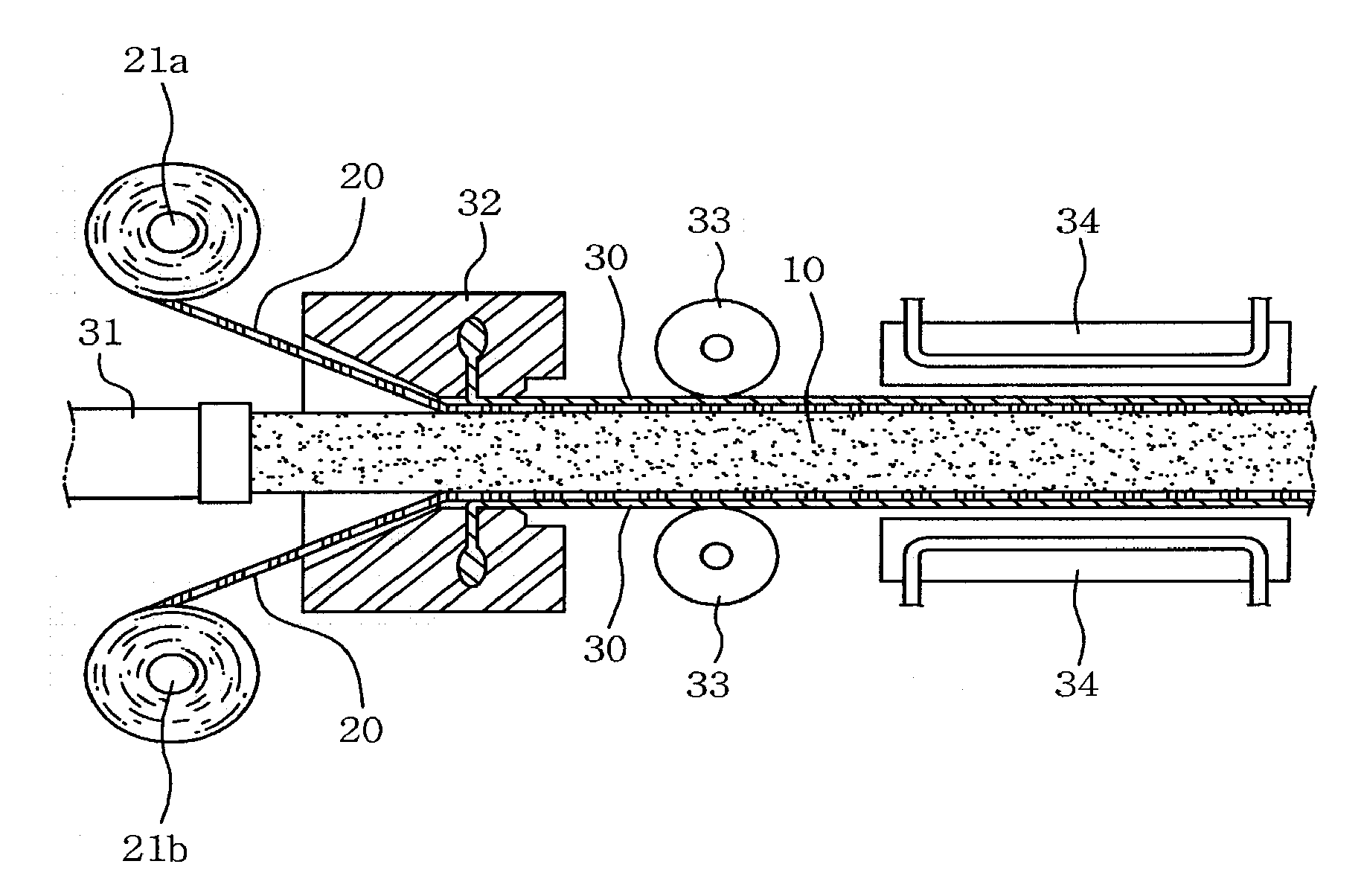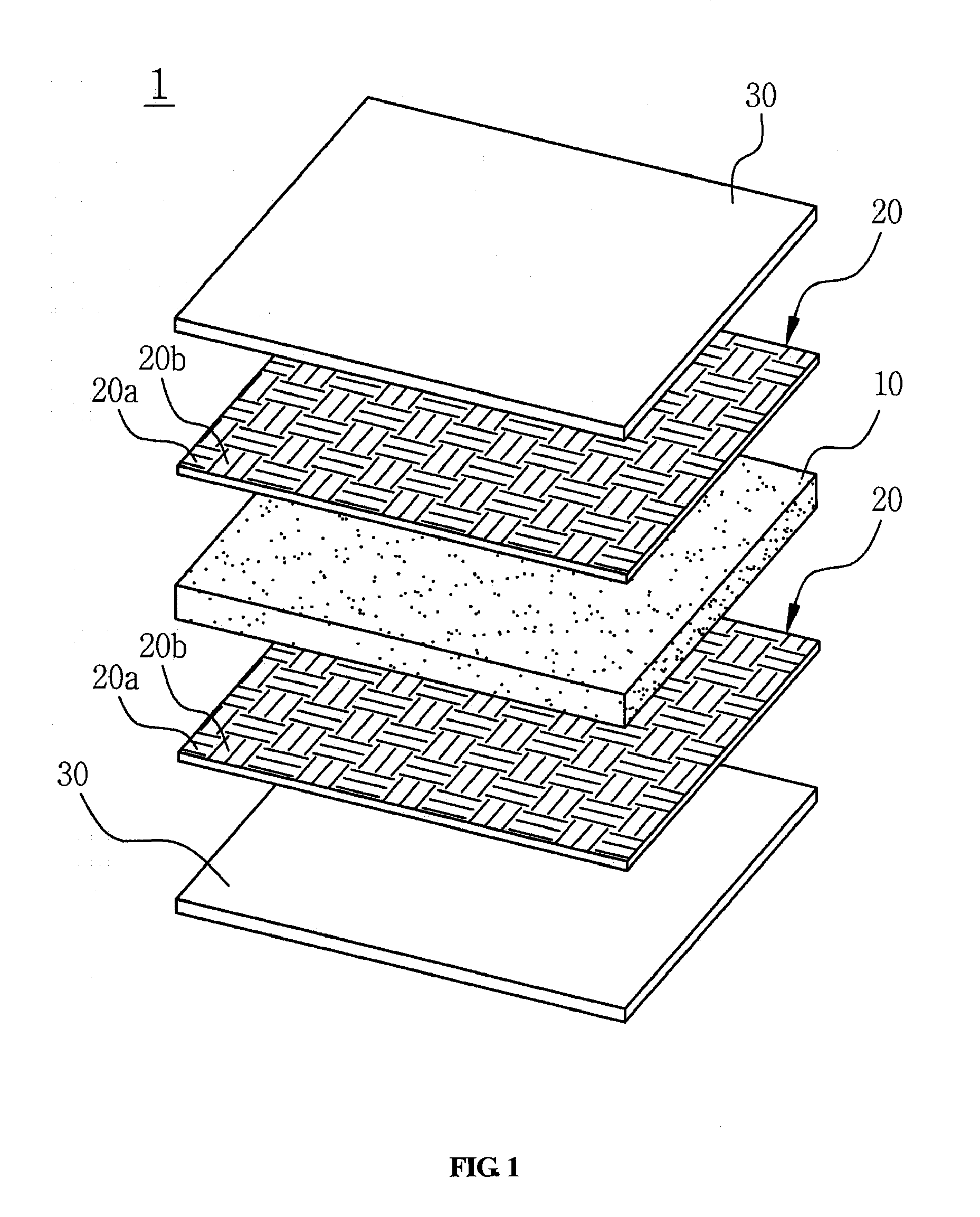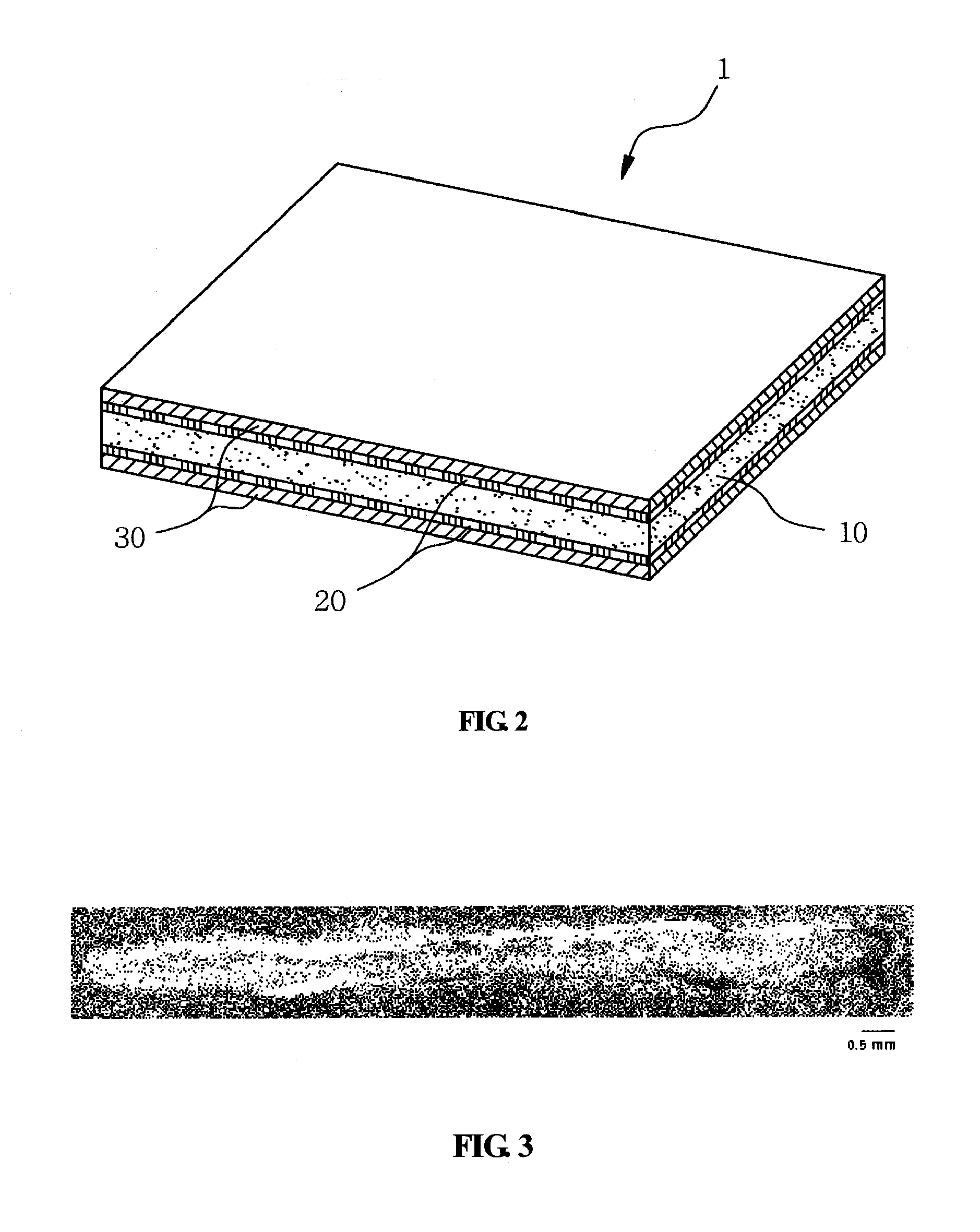Thermoplastic Compound Plate-Shaped Material, Method for Manufacturing and Articles Manufactured Using the Same
a technology of thermoplastic compound plate and material, applied in the field of thermoplastic composite sheet, can solve the problems of reduced bending elastic modulus, physical properties deterioration, unsuitability for concentrated load support, etc., and achieve excellent mechanical properties, impact strength and linear thermal expansion coefficient, bending elastic modulus
- Summary
- Abstract
- Description
- Claims
- Application Information
AI Technical Summary
Benefits of technology
Problems solved by technology
Method used
Image
Examples
example 1
[0047]According to the inventive method as described above, a fiber-reinforced continuous prepreg tape having a thickness of 0.25 mm and a width of 25 mm is obtained by impregnating 40% by weight of glass fiber with thermoplastic polypropylene resin, a 4 mm-thick prepreg sheet was manufactured by weaving or laminating the fiber-reinforced continuous prepreg tape in order to use in manufacturing of a thermoplastic composite sheet. The sheet was measured for bending strength, sheet impact strength and Izod impact resistance, and the results are shown in Table 2 below.
example 2
[0050]According to the inventive method as described above, a prepreg layer woven or laminated with a continuous fiber prepreg tape having a thickness of 0.25 mm and a width of 25 mm, obtained by impregnating 40% by weight of glass fibers with thermoplastic polypropylene resin, was laminated in two layers on each of both sides of 1 mm-thick center layers made of a long fiber-resin composite, thus manufacturing a laminated sheet with a total thickness of 3 mm. The sheet was measured for bending strength, sheet impact strength and Izod impact strength, and the results are shown in Table 3 below.
example 3
[0054]According to the inventive method as described above, the continuous reinforcing fiber-impregnated prepreg layer 20 with a thickness of 0.5 mm was woven or laminated with a reinforcing fiber-impregnated prepreg tape with a thickness of 0.25 mm and a width of 25 mm, which has been obtained by impregnating thermoplastic polypropylene resin into glass fibers. The prepreg layer 20 was laminated in one layer on each of both sides of the 10 mm-thick center layer 10 consisting of a composite layer of 40% by weight of chaff and polypropylene resin. Between the center layer 10 and the continuous reinforcing fiber-impregnated prepreg layer 20, a 0.5 mm-thick polypropylene adhesive layer was provided and the layers were melt-adhered to each other, thus manufacturing a laminated sheet with a thickness of 12 mm. The sheet was measured for bending strength, sheet impact strength and Izod impact strength, and the results are shown in Table 4 below.
PUM
| Property | Measurement | Unit |
|---|---|---|
| width | aaaaa | aaaaa |
| length | aaaaa | aaaaa |
| temperature | aaaaa | aaaaa |
Abstract
Description
Claims
Application Information
 Login to View More
Login to View More - R&D
- Intellectual Property
- Life Sciences
- Materials
- Tech Scout
- Unparalleled Data Quality
- Higher Quality Content
- 60% Fewer Hallucinations
Browse by: Latest US Patents, China's latest patents, Technical Efficacy Thesaurus, Application Domain, Technology Topic, Popular Technical Reports.
© 2025 PatSnap. All rights reserved.Legal|Privacy policy|Modern Slavery Act Transparency Statement|Sitemap|About US| Contact US: help@patsnap.com



